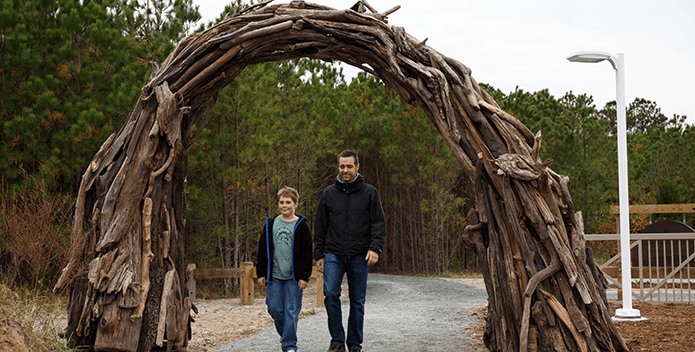The Chesapeake Bay Foundation (CBF) and an underwater photography team recently deployed the Clearwater Box—an innovative technology used to survey current and future oyster restoration sites—in two of Virginia rivers. The system, developed for CBF by photographers Nick Caloyianis and Clarita Berger, captures crystal clear underwater photos even in murky waters with zero visibility. This is extremely valuable for monitoring underwater oyster reefs that would otherwise be inaccessible.
“The Clearwater Box provides incredible images of new oyster restoration reefs despite difficult conditions. It’s a great way to scientifically evaluate oyster reefs without harming them,” said CBF Senior Regional Ecosystem Scientist Chris Moore. “We can use these photos as a benchmark to gauge how these reefs grow and expand in the future.”
The system features a camera encased in an aluminum box in the shape of a pyramid, which is filled with distilled water to create a clear field of view in murky water. The bottom of the box is a flat transparent port that allows photos and videos to be taken over the bottom. A scuba diver operates the camera and lights to illuminate the oyster reef being surveyed. A measuring ruler on the port allows for scale in the photos. Photos are taken methodically at intervals along a line across the reef, which provides valuable data about the size and density of the oysters.
“In the past, underwater photography depended on good visibility. The box is a magical opportunity. We’re swimming along with a clear column of water,” said Caloyianis. “Healthy oyster reefs equal a healthy Chesapeake Bay. Measuring and monitoring these restored oyster reefs is contributing to a healthier Bay.”
Last weekend CBF and the photographers used the system to document the growth of oyster restoration reefs on the Lafayette River, which last year was declared the first Virginia tributary fully restored for oyster habitat. The team also deployed the Clearwater Box in the Lynnhaven River, where oyster restoration work continues to progress.
“The results of our initial Virginia survey are encouraging,” said Moore. “Most of the reefs we monitored were built in the last two years. Not only are the oysters now impressive, but the abundance of other life such as redbeard sponge and anemones shows the diversity of life on an oyster reef.”
The tool will be valuable for measuring progress toward the Chesapeake Oyster Alliance goal of adding 10 billion oysters to the Bay by 2025.
“This system allows CBF to see which restoration approaches work best and which reef sites are ideal,” said Berger. “We were very excited to see oyster restoration success in the southern reaches of the Bay.”



